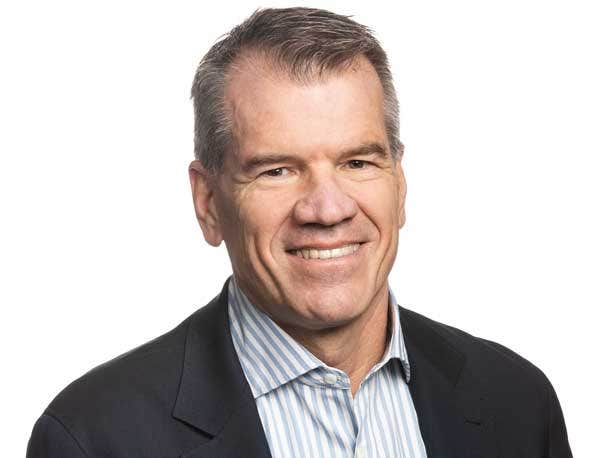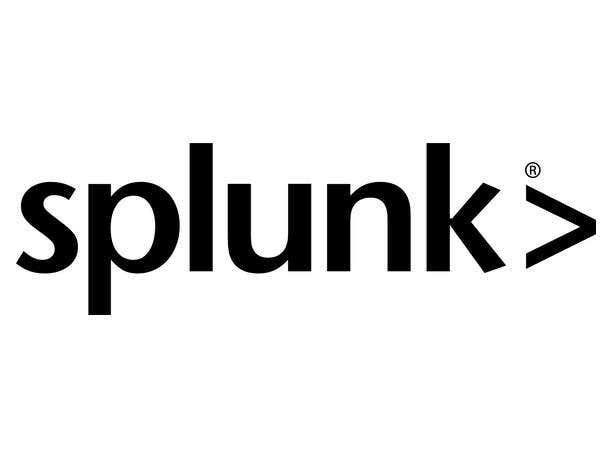Splunk CEO Gary Steele On Digital Resilience, The Pace Of Innovation And A Peek At This Week’s .Conf23
In an interview with CRN, Steele, who recently completed his first year as Splunk’s top executive, talks about the changes he has implemented at the unified security and observability software developer and the partner opportunities created by the need for digital resilience capabilities.

It has been 15 months since Gary Steele assumed the leadership of Splunk, taking over as president and CEO in April 2022 during a time of transition for the unified security and observability platform developer.
Since taking the reins at Splunk, Steele has installed a new leadership team, worked to improve efficiency and business execution, steadied the company’s sometimes uneven financial performance, and accelerated the pace of innovation.
Steele has also had to guide Splunk through a year of macroeconomic uncertainty that included layoffs in February of about 325 employees—about 4 percent of its workforce
Steele joined Splunk following the sudden resignation of CEO Doug Merritt in November 2021. Merritt’s departure came after Splunk had struggled through a revenue decline and periods of negative operating cash flow in fiscal 2021 at the height of the pandemic. In June 2021 private equity giant Silver Lake provided Splunk with a cash infusion with a $1 billion investment.
For its fiscal 2023 ended Jan. 31, 2023, Splunk reported revenue of $3.65 billion, up nearly 37 percent from $2.67 billion in fiscal 2022. In its fiscal 2024 first quarter ended April 30, 2023, the company reported revenue of $751.5 million, up more than 11 percent from $674.1 million one year before. Most notable in the quarter was a 16 percent gain in annual recurring revenue and a 243 percent increase in operating cash flow—key metrics that Steele is keeping an eye on.
Splunk has also been stepping up its channel efforts, including hiring former Microsoft executive Gretchen O’Hara as its new channel chief in October 2022.
This week Splunk is holding its Splunk .conf23 partner and customer event in Las Vegas where the focus is on providing customers with digital resilience through the Splunk unified cybersecurity and observability platform—capabilities that Steele says customers need to maintain the security and performance of their digital transformation initiatives.
Steele spoke with CRN on the eve of Splunk .conf23 to talk about his first year as Splunk president and CEO, the changes he has launched within the company, his focus on accelerating innovation, and his expectations for this week’s Splunk .conf23 event.

What have you been most focused on during your first year as Splunk CEO? Where have you devoted the most time?
I think it kind of falls into three buckets. One is increasing the pace of innovation in the company. And I think you’ll see with the announcements that we make [at Splunk .conf23] are the results of that. We’re super excited about new capabilities, including AI capabilities, that we think will be impactful not only to our customers but also to the partner community.
The second thing I’ve been focused on is driving more efficiency in the company. If you go back to our earnings calls, from the very first earnings call I did, I talked about balancing growth and profitability. And I think we’ve continued to deliver on that message by increasing our cash flow while maintaining a nice growth rate. That’s something that super important over the long haul. We think it’s important for investors and shareholders.
And then the third thing for me is really, broadly, helping drive adoption of Splunk through all the work we’re doing with partners, the role that partners are playing, the work that we’re doing to improve the customer experience—just finding broader adoption of product. We think there’s just tremendous opportunity with Splunk given the role that we’re playing and the mission-critical nature that we have. So there’s been a lot of work there. And with our new partner leadership, Gretchen O’Hara [vice president, worldwide channels and alliances], she’s really been driving that broad engagement with the partner community and the role that they can play. I think we’ve driven a lot of clarity around that.

A little more than one year ago youmentioned that aligning the people and the organization within Splunk and focusing on business execution were two things that you wanted to address. Have you achieved those?
I think we’ve made tremendous progress over the last year—super proud of the work that the team has done in that area. But efficiency is one of those things, you can always find more. And that’s really just thinking about how can we be more effective in driving the customer results that we want and what form does that take?
There have been quite a few executive changes at the company in the last year including the appointment of Min Wang as CTO and Toni Pavlovich as chief customer officer in April and Brian Roberts as CFO in January. Do you feel that you have your full management team in place or do you still have changes to make or vacancies to fill?
I’m really excited about the leadership changes we’ve made. I think it’s really been a great step forward for the company. Just to round out that list that you mentioned, which is a good list, we also have [Senior Vice President and General Manager, Platform] Tom Casey [hired in September 2022] who runs product for us. We also hired Sharyl Givens as our Chief People Officer [in October 2022]. And Gretchen O’Hara who runs the partner community for us was an amazing addition.
So to your point, there’s been a significant amount of change and I think all that change has been really, really helpful both to our customers and to the partner community. And Mike Horn, who is the general manager of our security business, joined us through the TwinWave Security acquisition, which was announced in November.

What would you say have been your biggest achievements since becoming CEO? And what have been the biggest challenges?
I think, you will see, the biggest achievement is really the pace of innovation that we’re seeing today, which I’m super excited about. And we did that while we were increasing efficiency. In Q1 we announced, for example, that our Opex [operating expenses] was down 1 percent year over year. So we did that while being more efficient.
And I think overall the one thing I continue to be very excited about is just the broad role that Splunk plays, driving broad business resilience for our customers, whether it be in the cyber [security] area, or more broadly, in the observability area where we’re helping customers keep their applications up and running.
Did you find yourself having to change the original agenda in response to changing events?
I think the only thing that was unexpected was the broader macroeconomic impact that we started to see in July of last year. We saw that, really, all the way through our last reported quarter. I don’t know that it was a distraction. I just think it was a reality of the world we’re living in. I think we’ve been managing through it quite well, but obviously it was a curve to deal with that at the time I joined [in April 2022] wasn’t expected.

The global economy is still in a state of uncertainty. How has that impacted Splunk’s business and what steps have you taken to keep the company on track?
I think one of the things that we’ve been public about was that we saw some of the cloud migration work that we’ve been doing with customers slowed down somewhat. People are thinking about what they have traditionally done on-prem with Splunk. Some of that planned migration to go to the cloud has been slowed down.
I think one of the key messages for us through all of this has been reinforcing for our customers that we believe in a multi-cloud, hybrid world. And we’ve reinforced the fact that if they’re getting value from their on-prem environment, that we’re going to continue to drive innovation on-prem as well as in the cloud and we’re not going to abandon anybody that’s on-prem. I think the economic environment really reinforced the importance of that message.
How so?
I think the cost of a cloud migration is an incremental cost. We don’t want to force people through a cloud migration in a challenging economic time. We want to meet them where they are and be thoughtful about allowing them to make the choice when they’re ready to make the choice to go to cloud. I think there’s some great advantages—there’s tremendous advantages—but there are also incremental costs to make that migration happen.

Splunk reported revenue gains for all of fiscal 2023 and for the first quarter of 2024, including gains in annual recurring revenue and cloud revenue. The company was also profitable in the fiscal 2023 fourth quarter. What metrics are you following most closely these days and which needles, so to speak, are you focused on trying to move?
Yes, it’s a really good question. We think that the best top-line metric is annual recurring revenue, or ARR. And the growth associated with ARR. And if you look at last quarter, we grew 16 percent in ARR. And then the best bottom-line metric for us is free cash flow. So how much free cash flow are we generating? And if you look at our Q1 results, the level of free cash flow that we generated and the guidance that we’ve given for the year, we’re very confident about our ability to deliver on those numbers. Those are the two key metrics.
Driving ‘digital resilience’ is going to be a major theme at this week’s Splunk .conf23 event with new unified security and observability offerings. How is this reflective of Splunk’s direction?
One of the things that’s really clear as companies have gone digital is that they have to secure that environment and so they need to be resilient from various forms of cyberattack. At the same time, as this broad digital footprint continues to mature, they need to keep those systems up and running to ensure that they can drive the customer outcomes they want to drive. And Splunk has been an underlying component in both of those worlds and we see convergence between them. I think the [Splunk .conf23] announcements that you’ll see really fortify that digital resilience messaging, both from a cyber perspective and more broadly across the observability market. We think partners will play a very critical role in helping their customers ultimately drive digital resilience both in cyber and, more broadly, observability. And there’s just a really interesting series of announcements that span these worlds.

What do you think will be the key takeaways for solution providers from the Splunk .conf23?
I think one of the key takeaways will be our view of the role that partners can play. I think we’ve got a much-clarified view of the importance that partners can play with our customers to drive outcomes in this digital resilience world. I believe that partners will find that we’re ready to engage and we see tremendous opportunity and growth for their businesses.
This digital resilience message resonates broadly and most customers want to talk about it. Many customers need some form of assistance that would come from partners. These are big initiatives in companies today. I think the resilience side of things is actually a very high priority. It comes in the form of improving security posture, it comes in the form of application uptime, application visibility, what’s really happening.
And for yourself, what kind of takeaways are you looking for from the conference? What are you hoping or expecting to hear back from customers and partners?
What I’m what I’m really excited about is showing our very loyal customer base the cool, exciting new innovations coming from Splunk and getting them excited about the new pace of innovation at Splunk. And we think that plays a role for our customers and we think that plays a role for partners.